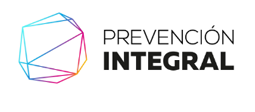Neuroscience sheds light on brain mechanisms underlying exceptional creativity
Neuroscience sheds light on brain mechanisms underlying exceptional creativity

The research, published in Psychology of Aesthetics, Creativity, and the Arts, reveals that people who exhibit exceptional creativity—referred to as “Big C” creative individuals—demonstrate more random patterns of connectivity in their brains. By using functional MRI (fMRI) technology, the researchers observed that highly creative brains bypass typical neural hubs, making distant connections between different regions of the brain more quickly and efficiently.
The purpose of the study was to explore the biological foundations of exceptional creativity. Despite over seventy years of research on creative achievement, there has been limited data to support the biological mechanisms that differentiate highly creative individuals from others. Most studies of brain function in creativity have focused on everyday or professional-level creativity.
However, few have investigated what happens in the brains of those who make transformative, world-changing contributions in the arts and sciences—people often referred to as “Big C” creative types. These individuals are not only distinguished by their high levels of creative achievement but also by their ability to think in novel and non-linear ways.
The new study sought to fill the gap in understanding how the brains of these exceptional individuals work differently from both typical people and those who are merely highly intelligent. The researchers were specifically interested in how brain regions responsible for creativity, problem-solving, and artistic or scientific invention interact during tasks that demand creative thinking.
“I became interested in the topic of creativity because creativity is elusive,” said study author Ariana Anderson, an assistant research professor at the Semel Institute for Neuroscience and Human Behavior at UCLA. “People can be highly creative without being highly educated, yet most studies of creativity have compared highly intelligent and creative individuals with ‘garden variety’ average people.”
“This confound suggests that the studies might be identifying what makes some individuals more clever than others, but not necessarily more creative. Our study compared creative people, who tend to be smarter than average, with garden variety smart people with equal intelligence.”
To investigate the neural basis of exceptional creativity, the research team recruited highly creative visual artists and scientists, as well as a comparison group of individuals matched for intelligence but not necessarily known for creative accomplishments. The study’s sample consisted of 66 participants: 21 Big C visual artists, 21 Big C scientists, and 24 “smart” individuals from the general population who served as a control group.
Each participant underwent brain scanning using fMRI technology, which measures brain activity by detecting changes in blood flow. The researchers captured brain connectivity both while participants were at rest and while they completed tasks designed to test their creative thinking. These tasks included:
- The Alternative Uses Test, which required participants to think of as many different uses as possible for a common object (for example, an umbrella).
- The Remote Associates Test, which presented three seemingly unrelated words and asked participants to find a fourth word that connected them (for example, the word “horse” connects the words “sea,” “rocking,” and “shoe”).
The researchers used a mathematical approach called graph theory to analyze the brain’s connectivity patterns. In this context, the brain’s regions were treated as “nodes,” and the connections between them as “edges.” The goal was to see how efficiently information flowed through these networks and whether Big C individuals exhibited distinct connectivity patterns compared to the control group.
During the resting-state scans, when participants were not engaged in any specific task, the Big C individuals showed more random patterns of brain connectivity compared to the control group. Specifically, they exhibited less “small-worldness”, a feature of brain networks that indicates an efficient balance between local and global connections. Instead of maintaining a highly organized structure, their brains displayed less clustering of connections between nearby regions, with more randomness overall.
However, locally, the creative individuals had increased clustering and efficiency, meaning certain brain areas were more specialized or active at rest. This suggests that while their overall brain network was more random, specific regions were more densely connected, potentially preparing them for creative thinking.
During the Alternative Uses Test, the Big C individuals had lower local efficiency and clustering compared to the control group. In other words, their brain activity was less organized and efficient while performing the task, which aligns with the idea that their brains may function in a more exploratory and less constrained manner during creative tasks. This reduced local connectivity suggests that, instead of focusing on specific brain regions, the creative individuals’ brains may adopt a more flexible approach, allowing for the generation of diverse and novel ideas.
“Our study found that creative individuals exhibited more random connectivity in their brains,” Anderson told PsyPost. “This suggests that to be creative, we need to focus less and relax more. However, relaxing doesn’t mean watching TikTok—it means resting our brains so they can generate their own internal content, rather than being influenced by external sources. In fact, our study showed the greatest differences in brain activity when creative individuals were doing nothing—not when they were actively trying to be creative or clever. Mind-wandering can be the optimal time for our creative brains to shine.”
Interestingly, no significant differences in brain connectivity were found during the Remote Associates Test. The lack of differences during this task suggests that while the Big C individuals excel in making broad, random connections during divergent thinking, their brain connectivity during tasks that require finding one correct solution may be similar to that of non-creative individuals.
“The creative group did not show significant differences in verbal word-play tasks compared to the IQ-matched group,” Anderson explained. “For example, if given the words ‘house, horse, dragon,’ both a creative and non-creative person would display similar brain activity when identifying the common word that links them (‘fly’).”
Despite these intriguing findings, the study has some limitations. One challenge in studying exceptional creativity is that it is difficult to recruit large samples of individuals who have achieved such high levels of success in their fields. As a result, the sample size in this study was relatively small, which limits the ability to detect more subtle differences between groups.
“Major caveats of our study include that we compared individuals already well-known for their creativity,” Anderson noted. “It doesn’t address the question of what makes some people highly creative, nor whether creativity is an inherent trait, or something that can be acquired or diminished. Many studies have shown that creativity rapidly diminishes in early childhood, so it’s crucial to explore how cultural shifts in parenting and screen time may be stifling the creative potential of children.”
“My long-term goals for this research are to determine how we can foster creativity in children. Do we become more creative through exposure to the arts or nature, or do we merely learn to mimic others’ styles, thus limiting originality? How does screen time affect children’s ability to generate new ideas, given that they are constantly exposed to repetitive content?”
“A 2019 study showed that today’s children are much less creative than previous generations of children,” Anderson added. “With post-COVID education being highly dependent on screens, it’s likely this trend is worsening. This will inevitably result in decreased innovation from future generations, which could have economic consequences.”
The study, “Big-C Creativity in Artists and Scientists is Associated With More Random Global but Less Random Local fMRI Functional Connectivity,” was authored by Ariana Anderson, Kevin Japardi, Kendra S. Knudsen, Susan Y. Bookheimer, Dara G. Ghahremani, and Robert M. Bilder.








